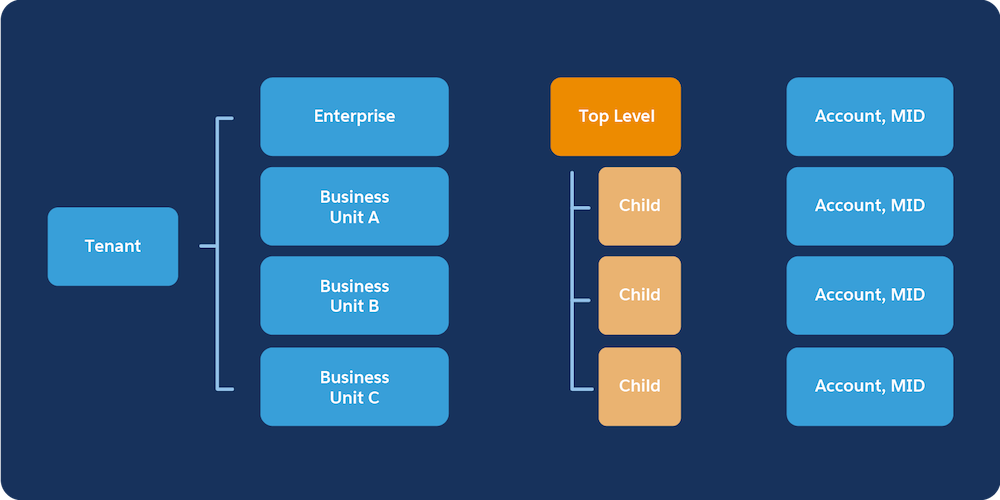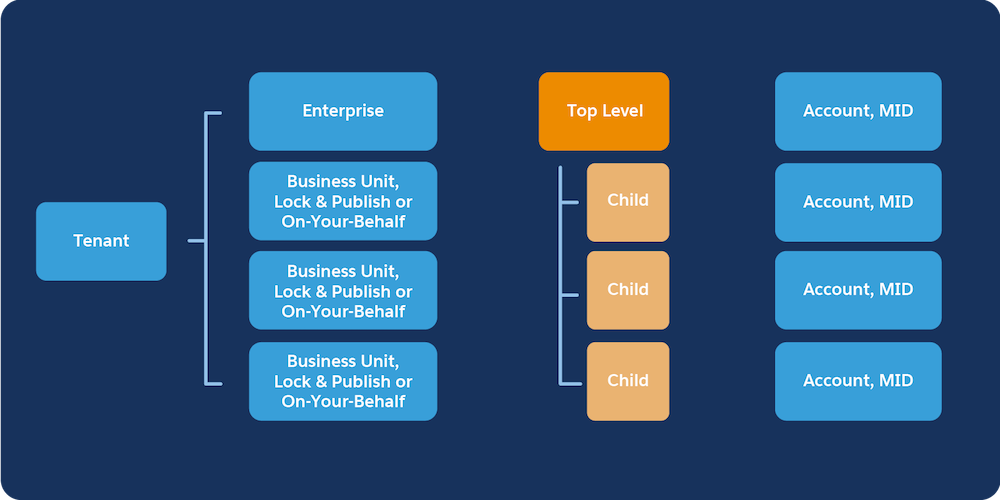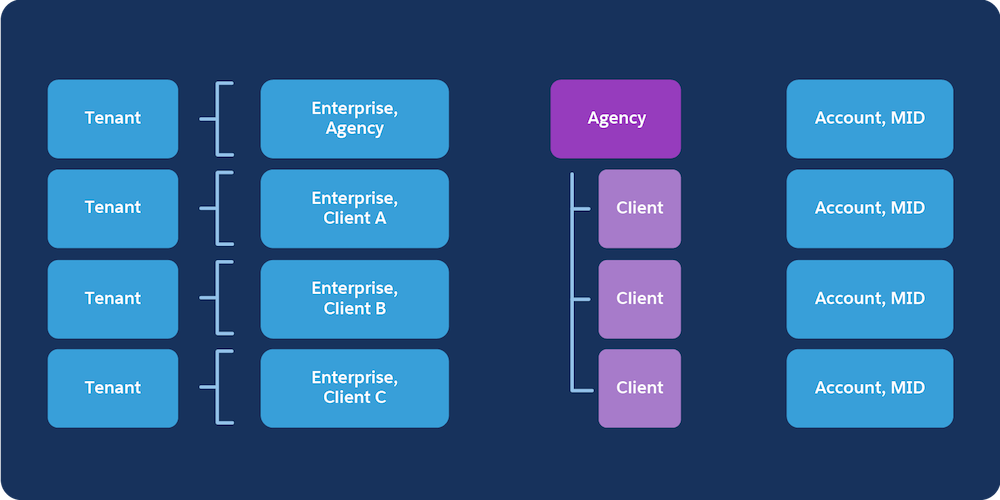Determine When and Where to Delete Contacts
Learning Objectives
After completing this unit, you’ll be able to:
- Decide whether or not to delete contacts from your Marketing Cloud Engagement account.
- Determine what contact information to delete.
- Identify the different tenant types in Marketing Cloud Engagement.
- Find contact information in Marketing Cloud Engagement.
When to Delete Contact Information (and When Not To)
Marketing Cloud Engagement accounts can contain hundreds of thousands (if not millions) of contact records. Each record contains basic information about a single person, including names, addresses, and other information you use to segment or target for your marketing activities. You don’t have to search through those records by hand, but even with automation, you’re dealing with a ton of data. At some point, the thought of deleting some of this data might cross your mind.
Before you delete anything, consider that contact records present a valuable source of information—even if you never intend to contact that person again. These contact records contain subscription information, and that can include valuable unsubscribe information. If a person unsubscribed from your messaging activities, you need to retain that information to prevent any further marketing sends. Not only is it bad form to keep pestering them, but you could run afoul of regulations outlawing that kind of communication (such as CAN-SPAM in the US).
Contact data also drives many important Marketing Cloud Engagement features, including the creation of audiences and Einstein tools like Engagement Scoring and Frequency. Plus, contact information helps you link promotional and transactional send activities to better engage your subscribers across marketing channels. And this information helps you understand all of your contacts’ interactions with your brand.
While we don’t recommend deleting contacts for the sake of tidying up, there are certain instances that may require you to delete contact information. Laws like the General Data Protection Regulation (GDPR) ensure that contacts have a right to be forgotten—in other words, they can request that you delete everything you know about them.
What Information Should You Delete?
When it comes to right-to-be-forgotten requests, there’s not a lot of room for debate. Forgotten means deleting everything about that contact. However, we do recommend keeping some kind of record to prevent an accidental send or contact. A simple identifier for the contact that you can use to prevent those sends suffices. And, of course, if the contact reaches out later to start another record with you, that’s perfectly OK. Just know that none of the previous contact information is available. That’s what delete means!
Marketing Cloud Engagement provides several tools to help you maintain regulatory compliance. To handle these kinds of requests, you can delete contacts from your account directly in Marketing Cloud Engagement or by using the REST API. But before we talk about how to delete contacts, you need to know where to find them in your account. This depends on the structure of your account—let’s take a look.
Determine Your Tenant Type
Nope, this section doesn’t help you determine the right candidate for your rental property. In Marketing Cloud Engagement, a tenant refers to the structure and organization of your account. Here’s what that looks like for each type of Marketing Cloud Engagement account.
For an Enterprise 2.0 account, a tenant is the top-level account and all associated business units.

For an Enterprise account, a tenant is the top-level account and all associated On-Your-Behalf or Lock & Publish business units.

For core accounts, a tenant is the single account.

And finally, in agency accounts, each top-level account and each associated client account is a separate tenant.

So, why’s it important to know your tenant type? The tenant type determines where you need to go looking for contact information in your account. For example, core accounts are simple—contact information can only exist at one level. For Enterprise 2.0 accounts, however, the vast majority of contact information resides in the parent account, but transactional sends may also contain contact information. And that information can exist at the business unit level as well.
Not sure about your tenant type? Your Marketing Cloud Engagement account representative or admin can help. Tip: If you’re working with business units, you most likely have an Enterprise 2.0 account.
Search for Contacts in Every Nook and Cranny
Now that you know your account structure, you can start your search! Here’s where to look.
Data Extensions
It makes sense that the first place you’d look for contacts is where Marketing Cloud Engagement stores the vast majority of its data: data extensions. In this case, you want to start with sendable data extensions. Sendable data extensions contain the contact key and the addresses used to send to that contact. When you initiate a Contact Delete request, these data extensions are the target of that request. However, that’s not the only place you should look. Other data extensions might contain more contact information that you need to delete. Review your Contact Builder data model to check what data extensions might contain contact information that should be deleted. You may need to perform this process manually to make sure you get everything.
Other Data Operations
Typically, Enterprise 2.0 accounts store all contact information at the top-level account and share that information to all other business units in that tenant. But business units could store more contact information in other locations. For example, triggered sends can store contact information like email addresses or mobile numbers. And data operations, like queries or filters, could also contain contact information. Manually remove this information from those sources when necessary.
Finally, synchronized data extensions could move information from other clouds into Marketing Cloud Engagement. It’s best to remove that information at the source, then delete it from Marketing Cloud Engagement to avoid accidentally reintroducing it back into your account.
Marketing Cloud Engagement doesn’t store contact information in objects such as templates or email header and footer rules. These entities can use information from data extensions for personalization, but the information doesn’t actually exist in those objects.
Now you know when to delete contact information and where to find it. In the next section, you learn how to delete a contact in Marketing Cloud Engagement.
